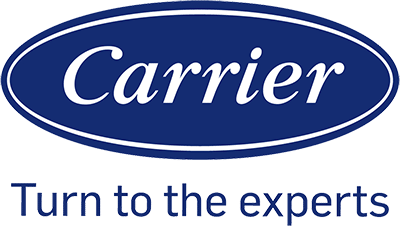Understanding HVAC Coil Cleaning
Clean coils in HVAC systems are crucial for maintaining good indoor air quality and ensuring the system operates efficiently. This section covers the importance of clean coils and the different types of coils found in HVAC systems.
Importance of Clean Coils for Indoor Air Quality
Coils play a key role in an HVAC system by facilitating heat exchange. When coils are dirty, they can’t transfer heat effectively, which can affect the whole system. Dust, mold, and other contaminants can build up on the coils over time. These pollutants can spread throughout the building, leading to poor indoor air quality.
Breathing contaminated air can cause health issues like allergies and respiratory problems. Regular coil cleaning helps prevent the buildup of dust and allergens. It also reduces the risk of mold growth, which thrives in the damp conditions of dirty coils. Clean coils ensure that the air flowing into your home or workspace is fresh and healthy.
Different Types of Coils in HVAC Systems
HVAC systems commonly use two main types of coils: evaporator coils and condenser coils.
Evaporator coils are located inside the indoor unit of an air conditioner or heat pump. They absorb heat from the indoor air, which is then cooled and distributed throughout the building. Keeping these coils clean is vital for efficient cooling and maintaining a consistent indoor temperature.
Condenser coils are found in the outdoor unit. They release the heat absorbed by the evaporator coils into the outdoor air. These coils are exposed to outdoor pollutants like dirt and leaves, making regular cleaning essential to prevent system blockages and ensure efficient operation.
Both these coils must be kept clean to maintain the performance and longevity of your HVAC system.
Benefits of Professional Coil Cleaning
Regular coil cleaning helps HVAC systems run more efficiently, saves energy, and extends the system’s longevity by preventing breakdowns and costly repairs.
Enhanced Efficiency and Energy Savings
Clean coils improve the heat transfer process, which leads to better system performance. When coils are free of dirt and debris, the HVAC system doesn’t have to work as hard, reducing energy consumption and wear and tear.
Cleaner coils result in improved energy efficiency, leading to lower utility bills. For instance, according to the US Department of Energy, an HVAC system with clean coils can operate up to 30% more efficiently than one with dirty coils.
A well-maintained coil system ensures that the cooling capacity is not reduced, preventing higher utility bills. Regular coil cleaning is a key maintenance task that can lead to significant energy savings.
Preventing Costly Repairs and Extending System Longevity
Dirty condenser coils strain the HVAC system, which can lead to breakdowns and costly repairs. Regular maintenance, including coil cleaning, can extend the system’s lifespan by reducing wear and tear.
Preventative maintenance helps avoid reduced cooling capacity and breakdowns, ensuring the system runs smoothly. By keeping the coils clean, the system experiences fewer disruptions, lowering the chances of needing expensive repairs.
Clean coils also contribute to better indoor air quality by preventing build-up that can be circulated through the system. Routine maintenance helps the system run more efficiently, thus extending its overall longevity.
Executing Coil Cleaning with Professional Standards
Professional coil cleaning ensures the HVAC system functions efficiently, removes grime, and extends the system’s life. The process requires expertise, specialized equipment, and adherence to best practices and safety protocols.
The Coil Cleaning Process: Inspection to Completion
The first step in professional coil cleaning is a thorough inspection of the HVAC system. Experts check for grime, debris, and any signs of wear or damage. This initial assessment helps identify the appropriate cleaning agents and techniques needed.
Once the inspection is complete, specialized equipment is used to remove debris and grime from the coils. This includes high-pressure water jets, brushes, and vacuum systems. The goal is to ensure a thorough cleaning while protecting the integrity of the coils.
Finally, the cleaned coils are inspected again to ensure no debris remains. The system is tested to confirm it operates efficiently post-cleaning. Scheduling regular service appointments for routine maintenance is recommended to keep the HVAC system in peak condition.
Best Practices and Safety Protocols for Effective Cleaning
Safety is paramount in air conditioner coil cleaning. Professionals follow strict safety protocols to prevent accidents and ensure a safe working environment. This includes wearing protective gear and being mindful of the surrounding equipment.
Best practices involve using the right cleaning agents that are effective yet safe for the coils. Harsh chemicals can damage the coils, so it’s essential to use products designed specifically for HVAC systems.
Experts also advise on routine maintenance and offer professional advice for homeowners. This includes scheduling regular appointments and keeping the system free from obstructions. Following these practices helps maintain efficiency and longevity of the HVAC system.




